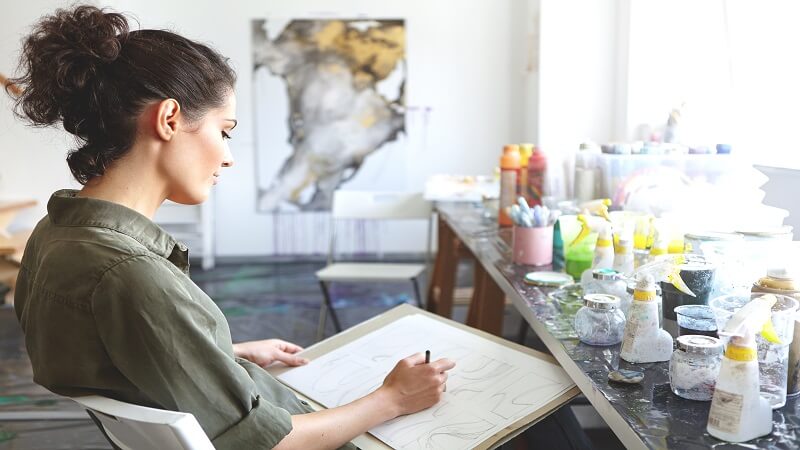Mastering different forms of paint offers creative possibilities for artists of all levels. Among so many options available, acrylic paint is known for its versatility, fast drying times, and vibrant colours, making it a favourite among many. So, read on and discover crucial tips and methods to maximise your experience with this form of painting. Whether going on your artistic journey or seeking to hone your craft, these insights are designed to steer you towards producing breathtaking artworks.
Ace the Basics
Before diving into techniques, it’s crucial to understand the paint and its characteristics. Diluting it with water or mediums can achieve a spectrum of effects, ranging from delicate washes mimicking watercolour to robust impastos that echo the texture of oil paint.
Tip: Experiment with different brands and types of paints to find the ones that best suit your style and the effects you want to achieve. High-flow acrylics are great for fluid art, while heavy body paints are ideal for texture and impasto techniques.
Preparing Your Surface
The surface you colour on can significantly affect the outcome of your artwork. Acrylics present a flexible range that can elevate diverse surfaces, including canvas, wood, paper, and more.
Technique: To prepare your canvas or paper for this form of painting, apply a coat or two of gesso.
Colour Mixing and Blending
Mastering colour mixing is essential for creating vibrant and lifelike paintings. Acrylics can be mixed directly on the palette or canvas to achieve the desired hue.
Technique: To blend colours seamlessly on the canvas, work quickly before the paint dries, using a damp brush to soften edges and transitions. For a more gradual blend, use a glazing technique by applying thin, transparent layers of colour.
Layering and Glazing
One of the strengths of these colours is their ability to build up layers. This allows for rich, complex compositions with depth and dimension.
Technique: Start with thin, diluted layers for the underpainting, gradually building to thicker, more opaque layers. Use glazing—a technique involving applying transparent layers of colour—to adjust hues, increase depth, or add luminosity to your painting.
Texture and Impasto
Creating texture with acrylics can add an exciting tactile quality to your work. Various methods, including impasto, where paint is applied thickly to create relief and texture, can achieve this.
Technique: Mix texturing material with heavy body acrylics to retain peaks and brush strokes. Apply the paint with a palette knife, brush, or other tools to create the desired texture. Experimenting with different tools and mediums can lead to unique and unexpected effects.
Drying and Curing
Understanding acrylic paint’s drying and curing times is crucial for working effectively. While acrylics dry to the touch quickly, they can take longer to cure fully, which is essential before applying varnish.
Tip: Be patient and allow your painting to dry completely before adding final touches or varnish.
Finishing and Protection
Protecting your finished painting is important for its longevity. Varnishing not only protects the surface from dust, UV rays, and minor scratches but can also enhance the vibrancy of the colours.
Technique: Select a paint-compatible varnish and apply it in slender, uniform layers, adhering to the manufacturer’s guidelines. Whether you prefer a glossy, satin, or matte finish, first test the varnish on a small area.
Continuous Learning and Experimentation
The journey to mastering this form of colour is one of continuous learning and experimentation. The versatility of acrylics allows for endless exploration of techniques, mediums, and styles.
Tip: Keep a sketchbook or a series of small canvases for experimenting with new techniques, colour combinations, or ideas. This practice can lead to breakthroughs in your work and help refine your artistic voice.
In conclusion, mastering acrylic paint involves understanding its properties, experimenting with various techniques, and continuous practice. By exploring different surfaces, mastering colour mixing and blending, and experimenting with texture and finishes, you can unlock the full potential of these paints in your artistic endeavours.
